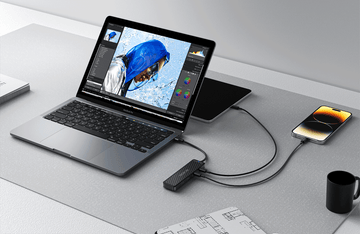What should you do if your USB Port Stops Working?
Everything is hooked up but USB Port still does not working.
Troubleshoot issues with a USB hub,ou can try to test to make sure that the following components are working correctly and are not the source of the issue:
1. If your computer has more different USB port,you can try more than more to see if the problem is specific to one port. You also can try a different cable with the peripheral you plugged in; make sure the existing one is not torn, melted, or otherwise damaged.
2. You can change device.If a mouse isn't working in a specific port, try a keyboard or printer instead to see if there's an issue with the device itself. Or, plug the device into a different computer.
3. Test the hub, you should do as follow:
If a power adapter is included, provide power to the USB hub.
Attach a USB peripheral. The USB hub will not appear in any hardware listings on your system, but USB devices do appear when they are connected.
Install the drivers for the USB peripheral.
Install the latest drivers for the USB controller and motherboard chipset.
Note: No drivers or software are required for the USB hub to work with your operating system. The USB hub works independently of software and works with any operating system.
4. Test your USB peripherals, you should do as follow:
If required, attach external power.
Confirm that the peripheral works on a standard USB port.
If the USB peripheral(s) can be detected on a standard USB port and not on the hub, do the following:
Use a new USB A-to-B cable.
Test your setup using basic USB peripherals, such as a keyboard or mouse.
Test using another USB port.
Hopefully you’ll find this post useful.
If necessary, the following articles may be able to solve your problems:
![[Solved] USB C to HDMI Adapter Cable Not Working](http://mokinglobal.com/cdn/shop/articles/Solved_USB_C_to_HDMI_Adapter_Cable_Not_Working_1_360x.png?v=1697522977)
